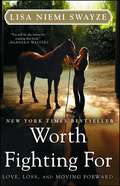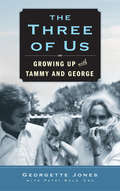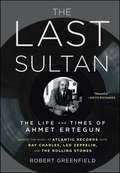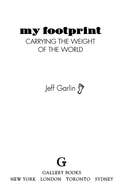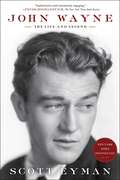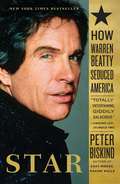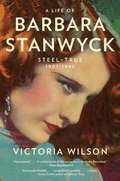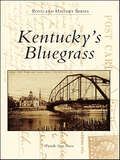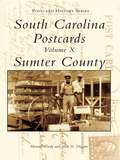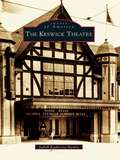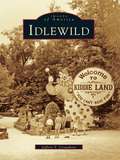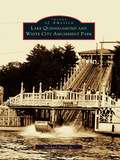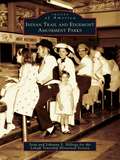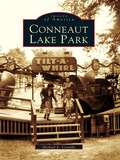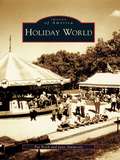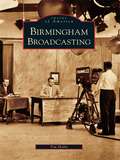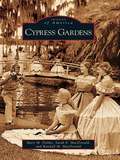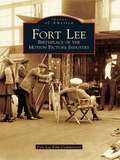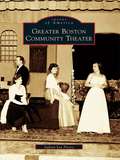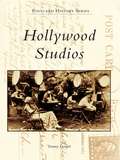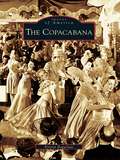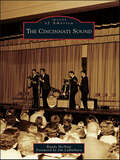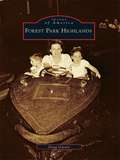- Table View
- List View
Worth Fighting For: Love, Loss, and Moving Forward
by Lisa Niemi SwayzeFrom Patrick Swayze’s widow—the moving, New York Times bestselling account of grief, loss, caregiving, and moving on, with touching stories from their final months together.When Lisa Niemi first exchanged vows with Patrick Swayze, she promised to be with her husband “till death do us part.” But how many couples stop and think about what that truly means? Worth Fighting For is both a candid tribute to a marriage and a celebration of the healing power that each day holds, even in the most difficult of circumstances. Lisa shares the details of Patrick’s twenty-one-month battle with Stage IV pancreatic cancer, and she describes his last days, when she simply tried to keep him comfortable. She writes with heartbreaking honesty about her grief in the aftermath of his death and openly discusses the challenges that the years without him have posed. Her story is an emotionally honest and unflinching depiction of loss, but it is also a hopeful and life-affirming exploration of the power of the human spirit. “I tell you, I am a different person now,” she writes, “one who has been thrown into the fire and forged.”
The Three of Us
by Patsi Bale Cox Georgette JonesThe marriage of George Jones and Tammy Wynette was hailed as a union made in honky-tonk heaven. And when little Tamala Georgette Jones was born in 1970, she was considered country music's heir apparent. For the first four years of her life, Georgette had two adoring parents who showed her off at every opportunity, and between her parents, grandparents, older sisters, and cheering fans, Georgette's feet seldom hit the ground. But as in every fairy tale, dark forces were just around the corner. Her parents fought, and George drank. George and Tammy divorced when Georgette was four, and it would be years before she understood just what that meant. The Three of Us is an honest and heartfelt look into the life of a broken family living in the glare of the public spotlight. Like so many of her generation, Georgette had to make sense of loving two parents who couldn't love each other. With never-before-told stories about George and Tammy, it recounts Tammy's descent into prescription pill addiction, her dependence on her fifth husband, George Richey, and her untimely death at the age of fifty-five. Georgette opens up about her broken relationship with her father and what it took for them to come back together. Lastly, Georgette discusses the ups and downs of her adult life: failed marriages, illness, an arrest, and now, an unexpected but thrilling career as a musician. The Three of Us is a story of both extreme privilege and great trials, of larger-than-life people with larger-than-life problems. Rich in country music history, it contains twists and turns, highs and lows, but in the end, it stands as an intensely moving tale of love, loss, heartbreak, and what it means to be a family.
The Last Sultan
by Robert GreenfieldThe Last Sultan is the definitive biography of a man who changed popular culture throughout the world. As the founder and head of Atlantic Records, Ahmet Ertegun signed and/or recorded many of the greatest musical artists of all time, among them Ruth Brown; Big Joe Turner; Ray Charles; Bobby Darin; Sonny and Cher; Eric Clapton; Buffalo Springfield; Crosby, Stills, Nash & Young; Led Zeppelin; the Rolling Stones; Bette Midler; and Kid Rock. Working alongside his older brother, Nesuhi, one of the preeminent jazz producers of all time, and the legendary Jerry Wexler, who produced great soul artists like Wilson Pickett, Solomon Burke, and Aretha Franklin, Ertegun transformed Atlantic Records from a small independent record label into a hugely profitable multinational corporation. In successive generations, he also served as a mentor to record-business tyros like Phil Spector, David Geffen, and Lyor Cohen. Brilliant, cultured, and irreverent, Ertegun was as renowned for his incredible sense of personal style and nonstop A-list social life as his work in the studio. Born into great privilege as the son of a high-ranking Turkish diplomat during the last days of the Ottoman Empire, Ertegun spent his life bringing the black-roots music he loved to the world. A larger-than-life figure, always hip, Ertegun lived in the grand manner but was never happier than when he found himself in some down-and-out joint listening to music late at night. Blessed with impeccable taste and brilliant business acumen, he brought rock 'n' roll into the mainstream while creating the music that became the sound track for the lives of multiple generations. With supporting characters like Steve Ross, Henry Kissinger, Mick Jagger, Keith Richards, Jann Wenner, and a host of others, The Last Sultan is the fascinating story of a man who always lived by his own rules.
My Footprint
by Jeff GarlinJeff Garlin shares his hysterical and eye-opening journey to reduce his waistline and his carbon footprint during the production of the seventh season of HBO's Curb Your EnthusiasmJeff Garlin has dedicated the filming of an entire season of Curb Your Enthusiasm to completely making over his lifestyle in two major ways--by lightening his physical and his ecological footprints. After many false starts, he believes that writing a book about the experiment is the only possible way to help him lose weight and go green. The hardest part of the endeavor is overcoming his food addiction--especially when craft service has a constant buffet of everything delicious you could imagine on set. In addition to cutting calories, Jeff accidentally falls into a love affair with pilates, sweats with Richard Simmons, and twice visits the Pritikin Longevity Center, which he says is "rehab for people who eat too much pizza." Larry David's rooting for him. Jerry Seinfeld's plotting against him. And his wife is just plain annoyed by everything. As far as going green, Jeff has always been a big recycler, but he has a lot to learn. For example, actor Ed Begley Jr. is the guy to call if you want to reduce your environmental impact. Jeff does, and it changes everything. He hopes that being healthy and green becomes a big part of who he is--if not now, when?
John Wayne: The Life and Legend
by Scott EymanThe New York Times bestselling biography of John Wayne: &“authoritative and enormously engaging…Eyman takes you through Wayne&’s life, his death, and his legend in a detailed, remarkably knowledgeable yet extremely readable way&” (Peter Bogdanovich, The New York Times Book Review).John Wayne died more than thirty years ago, but he remains one of today’s five favorite movie stars. The celebrated Hollywood icon comes fully to life in this complex portrait by noted film historian and master biographer Scott Eyman. Exploring Wayne’s early life with a difficult mother and a feckless father, “Eyman gets at the details that the bean-counters and myth-spinners miss…Wayne’s intimates have told things here that they’ve never told anyone else” (Los Angeles Times). Eyman makes startling connections to Wayne’s later days as an anti-Communist conservative, his stormy marriages to Latina women, and his notorious—and surprisingly long-lived—passionate affair with Marlene Dietrich. He also draws on the actor’s own business records and, of course, his storied film career. “We all think we know John Wayne, in part because he seemed to be playing himself in movie after movie. Yet as Eyman carefully lays out, ‘John Wayne’ was an invention, a persona created layer by layer by an ambitious young actor” (The Washington Post). This is the most nuanced and sympathetic portrait available of the man who became a symbol of his country at mid-century, a cultural icon and quintessential American male against whom other screen heroes are still compared.
Star: The Life and Wild Times of Warren Beatty
by Peter BiskindIn this compulsively readable and constantly surprising book, Peter Biskind, the author of the film classics Easy Riders, Raging Bulls and Down and Dirty Pictures, writes the most intimate, revealing, and balanced biography ever of Hollywood legend Warren Beatty. Famously a playboy—he has been linked to costars Natalie Wood, Julie Christie, Diane Keaton, and Madonna, among others—Beatty has also been one of the most ambitious and successful stars in Hollywood. Several Beatty films have passed the test of time, from Bonnie and Clyde to Shampoo, Heaven Can Wait, Reds (for which he won the best director Oscar), Bugsy, and Bulworth. Few filmgoers realize that along with Orson Welles, Beatty is the only person ever nominated for four Academy Awards for a single film—and unlike Welles, Beatty did it twice, with Heaven Can Wait and Reds. Biskind shows how Beatty used star power, commercial success, savvy, and charm to bend Hollywood moguls to his will, establishing an unprecedented level of independence while still working within the studio system. Arguably one of the most successful and creative figures in Hollywood over the last few decades, Beatty exercised unique control over his films, often hiring screenwriters out of his own pocket (and frequently collaborating with them), producing, directing, and acting, becoming an auteur before anyone in Hollywood knew what the word meant. In this fascinating biography, the ultimate Hollywood Star comes to life—complete with excesses and achievements—as never before.
Star: The Life and Wild Times of Warren Beatty
by Peter BiskindIn this compulsively readable and constantly surprising book, Peter Biskind, the author of the film classics Easy Riders, Raging Bulls and Down and Dirty Pictures, writes the most intimate, revealing, and balanced biography ever of Hollywood legend Warren Beatty. Famously a playboy—he has been linked to costars Natalie Wood, Julie Christie, Diane Keaton, and Madonna, among others—Beatty has also been one of the most ambitious and successful stars in Hollywood. Several Beatty films have passed the test of time, from Bonnie and Clyde to Shampoo, Heaven Can Wait, Reds (for which he won the best director Oscar), Bugsy, and Bulworth. Few filmgoers realize that along with Orson Welles, Beatty is the only person ever nominated for four Academy Awards for a single film—and unlike Welles, Beatty did it twice, with Heaven Can Wait and Reds. Biskind shows how Beatty used star power, commercial success, savvy, and charm to bend Hollywood moguls to his will, establishing an unprecedented level of independence while still working within the studio system. Arguably one of the most successful and creative figures in Hollywood over the last few decades, Beatty exercised unique control over his films, often hiring screenwriters out of his own pocket (and frequently collaborating with them), producing, directing, and acting, becoming an auteur before anyone in Hollywood knew what the word meant. In this fascinating biography, the ultimate Hollywood Star comes to life—complete with excesses and achievements—as never before.
A Life of Barbara Stanwyck
by Victoria WilsonFifteen years in the making, the first volume of the full-scale astonishing life of one of our greatest screen actresses whose career in pictures spanned four decades beginning with the coming of sound--the first to delve deeply into Stanwyck's rich, complex life and to explore her extraordinary range of eighty-eight motion pictures, many of them iconic; her work, her world, her Hollywood through an American century.Frank Capra called her, "The greatest emotional actress the screen has yet known." Yet she was one of its most natural, timeless, and underrated stars. Now Victoria Wilson, gives us the most complete portrait we have yet had, or will have, of this magnificent actresses, seen as the quintessential Brooklyn girl whose family was in fact of old New England stock...her years in New York as dancer and Broadway star...her fraught marriage to Frank Fay, Broadway genius, who influenced a generation of actors and comedians (among them, Jack Benny and Stanwyck herself)...the adoption of a son, embattled from the outset; her partnership with the "unfunny" Marx brother, Zeppo, together creating one of the finest horse breeding farms in the west; her fairytale romance and marriage to the younger Robert Taylor, America's most sought-after male star...Here is the shaping of her career working with many of Hollywood's most important directors: among them, Capra, King Vidor, Cecil B. Demille, Preston Sturges, all set against the times--the Depression, the rise of the unions, the coming of World War II and a fast-evolving coming-of-age motion picture industry. At the heart of the book, Stanwyck herself--her strengths, her fears, her desires--how she made use of the darkness in her soul, keeping it at bay in her private life, transforming herself from shunned outsider into one of Hollywood's--and America's--most revered screen actresses. Written with full access to Stanwyck's family, friends, colleagues, and never-before-seen letters, journals and photographs.
A Life of Barbara Stanwyck
by Victoria WilsonFrank Capra called her "The greatest emotional actress the screen has yet known." She was one of its most natural, timeless, and underrated stars. Now, Victoria Wilson gives us the first full-scale life of Barbara Stanwyck, whose astonishing career in movies (eighty-eight in all) spanned four decades beginning with the coming of sound, and lasted in television from its infancy in the 1950s through the 1980s--a book that delves deeply into her rich, complex life and explores her extraordinary range of motion pictures, many of them iconic. Here is her work, her world, her Hollywood. We see the quintessential Brooklyn girl whose family was in fact of old New England stock . . . her years in New York as a dancer and Broadway star . . . her fraught marriage to Frank Fay, Broadway genius, who influenced a generation of actors and comedians (among them, Jack Benny and Stanwyck herself ) . . . the adoption of a son, embattled from the outset; her partnership with the "unfunny" Marx brother, Zeppo, crucial in shaping the direction of her work, and who, together with his wife, formed a trio that created one of the finest horse-breeding farms in the west; her fairy-tale romance and marriage to the younger Robert Taylor, America's most sought-after-- and beautiful--male star. Here is the shaping of her career with many of Hollywood's most important directors: among them, Frank Capra, "Wild Bill" William Wellman ("When you get beauty and brains together," he said, "there's no stopping the lucky girl who possesses them. The best example I can think of is Barbara"), King Vidor, Cecil B. De Mille, and Preston Sturges, all set against the times--the Depression, the New Deal, the rise of the unions, the advent of World War II--and a fast-changing, coming-of-age motion picture industry. And here is Stanwyck's evolution as an actress in the pictures she made from 1929 through the summer of 1940, where Volume One ends--from her first starring movie, The Locked Door ("An all-time low," she said. "By then I was certain that Hollywood and I had nothing in common"); and Ladies of Leisure, the first of her six-picture collaboration with Frank Capra ("He sensed things that you were trying to keep hidden from people. He knew. He just knew"), to the scorching Baby Face, and the height of her screen perfection, beginning with Stella Dallas ("I was scared to death all the time we were making the picture"), from Clifford Odets's Golden Boy and the epic Union Pacific to the first of her collaborations with Preston Sturges, who wrote Remember the Night, in which she starred. And at the heart of the book, Stanwyck herself--her strengths, her fears, her frailties, her losses and desires; how she made use of the darkness in her soul in her work and kept it at bay in her private life, and finally, her transformation from shunned outsider to one of Hollywood's--and America's--most revered screen actresses. Writing with the full cooperation of Stanwyck's family and friends, and drawing on more than two hundred interviews with actors, directors, cameramen, screenwriters, costume designers, et al., as well as making use of letters, journals, and private papers, Victoria Wilson has brought this complex artist brilliantly alive. Her book is a revelation of the actor's life and work.
Kentucky's Bluegrass (Postcard History Series)
by Wynelle Scott DeeseWithin these pages are vintage postcards, created between 1900 and 1950, that depict an area known across the country as Kentucky�s Bluegrass. From its horse farms to its military forts and river commerce, this seventeen county region exemplifies the spirit and pride of Kentucky, and the images preserved on these postcards bring the history of this unique area to life.
Birmingham's Theater and Retail District (Images of America)
by Tim HollisFrom the 1890s to the 1970s, the thriving area of Birmingham between Eighteenth and Twenty-first Streets along First, Second, and Third Avenues was the bustling heart of this quickly growing city. Before the age of the shopping mall, the downtown was the center of retail and entertainment in Birmingham. Along these streets, entrepreneurial immigrants built department stores--including Pizitz and Loveman, Joseph, and Loeb--while the marquees of the Alabama, Ritz, and Lyric theaters, among others, shined over the busy downtown sidewalks.
Keswick Theatre, The (Images of America)
by Judith Katherine HerbstThe Keswick Theatre, located just outside Philadelphia, opened in 1928 in an era when four thousand similar structures were in various stages of design and construction across the country. Vaudeville was in its final days and film was just being born. Designed by acclaimed architect Horace Trumbauer, the theater evolved into the area's premier movie house. When the theater was threatened with demolition in the early 1980s, the Glenside Landmarks Society was formed with the hopes of restoring the building to its former grandeur. Today, operating as a commercial venture, it is one of the most acclaimed concert halls in the Philadelphia area. The Keswick Theatre celebrates this historic landmark through vintage images and recognizes the dedicated community members who have kept its doors open.
Idlewild (Images of America)
by Jeffrey S. CroushoreLocated in the scenic Laurel Highlands of western Pennsylvania, America's third oldest amusement park, Idlewild, was founded in 1878 as a picnic ground along the Ligonier Valley Rail Road. Its tranquil setting quickly established Idlewild as the premier place for church, school, and corporate picnics, as well as a recreational getaway for families. Idlewild added new amusements and facilities as its crowds continued to grow, but it always strove to maintain the picturesque landscape of the site. Soon a full-fledged amusement park was in operation, with throngs of visitors disembarking the trains from such places as Latrobe, Greensburg, and Pittsburgh.Home to unique attractions like Story Book Forest, the Rollo Coaster, Mister Rogers' Neighborhood of Make-Believe, and the SoakZone, Idlewild has been the backdrop for generations of fond memories. Idlewild's proximity to the Lincoln Highway helped the park survive the abandonment of the railroad, and careful development by the Mellon and Macdonald families and the Kennywood Entertainment Company continue to help it thrive. This collection of photographs tells the story of how one of America's most beautiful theme parks has grown throughout the years.
Lake Quinsigamond and White City Amusement Park (Images of America)
by Michael Perna Jr.In the 1800s and well into the 1900s, the area around Lake Quinsigamond, in Shrewsbury and Worcester, was one huge summer resort. Hotels, ethnic and social clubs, boat clubs, a horse racing track, picnic grounds, and two amusement parks, Lincoln Park and White City Park, lined the shore. Steamboats and smaller steam launches transported tourists to the area. Canoes, rowboats, sailboats, and motorboats crowded the lake on weekends. Crew boat regattas, which started in the 1850s, continue to this day. Lake Quinsigamond and White City Amusement Park lets readers experience the attractions, such as the shoot the chutes and White City roller coaster, and enjoy the fun atmosphere during those long-ago summers.
Indian Trail and Edgemont Amusement Parks (Images of America)
by Lehigh Township Historical Society Johanna S. Billings Sean BillingsIndian Trail and Edgemont Amusement Parks highlights the history of two legendary amusement parks in Lehigh Township. Unique images cover Indian Trail Park from its founding by Samuel and William Solliday in 1929 to its closing in 1984. Photographs of Edgemont Park recall its days as a trolley park, started by the Blue Ridge Traction Company. These images are sure to bring back memories of the rides, games, and thrills that kept people coming back year after year.
Conneaut Lake Park
by Michael E. CostelloIn 1877, a humble boat landing was constucted on Conneaut Lake, Pennsylvania's largest natural lake. Colonel Frank Mantor, a visionary, discovered and purchased the property and convinced investors from the Pittsburgh, Shenango, and Lake Erie Railroad to extend the railroad line to a newly built resort on the site. In 1892, Exposition Park--a permanent fair exhibiting machinery and livestock--was founded. Amusement rides wereadded alongside hotels, cottages, restaurants, and other businesses. The resort grew into an amusement park and was renamed Conneaut Lake Park in 1920. Conneaut Lake Park illustrates the evolution of this lakeside resort with images of long-gone attractions such as the Hotel Elmwood, Temple of Music, Jungle Cruise, Fairyland Forest, and Wild Mouse. Recent favorites such as the Blue Streak, Tumble Bug, Ultimate Trip, and Devil's Den are also included.
Holiday World (Images of America)
by Pat Koch Jane AmmesonLouis J. Koch had a dream--one of family, fun, and Christmastime year-round. And so he created Santa Claus Land, the nation's first theme park, in Santa Claus, located in the gentle rolling hills of southern Indiana. Now, six decades later, Koch's legacy lives on at Holiday World and Splashin' Safari. Still owned and operated by the Koch family, Holiday World and Splashin' Safari are consistently voted the friendliest and cleanest parks in the country, and their wooden roller coasters are rated in the top ten list among coaster enthusiasts. The Koch family members treat visitors to the park as family and welcome everyone into what has become a true extension of their home.
Birmingham Broadcasting
by Tim HollisBirmingham, Alabama, has enjoyed a long and distinguished broadcasting history. The city's first radio station aired in 1922, and television arrived in 1949. Both media produced personalities who became household names in the city. Audiences came to know Joe Rumore, Tommy Charles, Country Boy Eddy, Cousin Cliff Holman, Rosemary, Pat Gray, Tom York, and many others as if they were members of their own families. Even the commercials became as memorable as the news, entertainment, talk, and children's shows they interrupted.
Cypress Gardens
by Mary M. Flekke Randall M. Macdonald Sarah E. MacdonaldFlorida's first theme park, Cypress Gardens, was the brainchild of Richard Downing Dick" Pope Sr. With his wife, Julie Downing Pope, he transformed a marshy, lakeside property in Winter Haven into a magnificent garden. The park's first visitors in 1936 toured pathways surrounded by lush plants from around the world. Two years later, electric boats meandered through the park's winding, hand-dug canals. Water ski shows commenced in 1942, and the park became the "Water Ski Capital of the World." The Florida-shaped Esther Williams Swimming Pool still graces the shore of Lake Eloise. The park was a set for dozens of short feature films, a stage for beauty pageants, and a site for special television broadcasts. A butterfly garden, zoo, rides, and the small-town Southern Crossroads shopping and dining area remain popular features. Kent Buescher purchased Cypress Gardens in 2004, and today's expanded Cypress Gardens Adventure Park preserves the family-friendly appeal of Dick and Julie Pope's magnificent park."
Fort Lee: Birthplace of the Motion Picture Industry
by Fort Lee Film CommissionA favorite locale of such film pioneers as D. W. Griffith and Mary Pickford, the historic borough of Fort Lee was the first center of the American motion picture industry. Studios lined both sides of Main Street, and enormous film laboratories fed the nickelodeon market with thousands of reels of comedies and cliffhangers. Broadway stars and producers came here to make many of their first feature-length films; but by the 1920s, Theda Bara, Fatty Arbuckle, and Douglas Fairbanks were gone. Yet even after the studios closed down, the film industry was still the backbone of the local economy, with hundreds working behind the scenes in the printing, storage, and distribution of movies being made in Hollywood.
Greater Boston Community Theater
by Judson Lee PierceThe roots of community theater can be traced back to before the Revolutionary War. In the years that followed, many towns throughout America were fortunate to have both professional and amateur acting companies. The evolution of the moving picture forced many of these professional theaters to close their doors, but theater lovers in small communities still wanted the real thing, live theater. Today there are numerous community theater groups around the Boston area, including the oldest continuing community theater group in the country, the Footlight Club, which was founded in 1877. In the spirit of community, many theater companies donate to charities and sponsor playwriting contests and scholarship programs. They all share a common goal: bring live theater to suburban communities. Greater Boston Community Theater presents rare photographs from more than a dozen community theaters to document and celebrate the rich tapestry of theater life.
Hollywood Studios (Postcard History Series)
by Tommy DangcilJust after the turn of the 20th century, the motion picture industry moved to the West Coast, and the largest land of make-believe was created in Hollywood, California. From the silent-era beginnings of primitive, open-air stages to the fabled back lots of the studios' heyday, Hollywood Studios presents a bygone era of magical moviemaking in rare postcards. Assembled from the author's private collection, these images from the Chaplin Studios to Metro-Goldwyn Mayer depict an insider's look back at the dream factories known as the Hollywood studios.
Copacabana, The
by Kristin BaggelaarIt has been years since New York has seen anything quite like the old Copacabana. The Copa, Manhattan's best-known night club, was also the most popular nightspot in America. From the moment it burst onto the scene in 1940, an aura of glamour and sophistication hovered over the Copa. It was a luminous glow that, over the course of five decades, served this illustrious establishment well, beckoning the people who made it famous-Hollywood stars, sports heroes, foreign dignitaries, and the town's leading families, including the Kennedys, the Roosevelts, and the Du Ponts. The Copa was a showcase for past, present, and future stars, including Joe E. Lewis, Sophie Tucker, Jimmy Durante, Julie Wilson, Tony Orlando, and Wayne Newton. Through vintage photographs and stories from performers, Copa Girls, and other people connected with the Copa's history, The Copacabana chronicles how this landmark institution became an American cultural icon.
The Cincinnati Sound (Images of America)
by Randy McNuttFrom 1940 to 1970, Cincinnati overflowed with musical opportunities. Hank Williams recorded his hit "Lovesick Blues." Andy Williams, Rosemary andBetty Clooney, and Doris Day appeared regularly on WLW Radio, which also broadcast Boone County Jamboree. Then came the network television showMidwestern Hayride and stardom for Kenny Price. Meanwhile, King and Fraternity Records released hundreds of hits for James Brown, Hank Ballard and the Midnighters, Cowboy Copas, Lonnie Mack, and the Casinos. In the late 1960s, the Lemon Pipers sang "Green Tambourine," and rock bands ruled Coney Island's Moonlite Gardens. It was a wild, incredible ride while it lasted, and it left such an indelible impression that today Cincinnati is remembered as one of America's top music capitals.
Forest Park Highlands
by Doug GarnerForest Park Highlands was once St. Louis's largest and best-known amusement park. In its earliest years, the Highlands boasted a fine theater and one of the largest public swimming pools in the United States. After the 1904 world's fair closed, several attractions found a new home at the Highlands; the large pagoda--a re-creation of the temple of Nekko, Japan--served as the park's bandstand for several years. Roller coasters are the lifeline of every good amusement park, and the Highlands always had two. The end came for the Highlands in a spectacular fire that decimated almost the entire park on July 19, 1963. Only the Comet roller coaster, the Ferris wheel, the Dodgems, the carousel, and the Aero Jets survived. Forest Park Highlands covers other historic amusement parks in St. Louis as well, starting with the earliest, West End Heights, and ending with Holiday Hill, the last remaining park.
